-
Executive Summary
-
Scope of the Report
-
Market Definition
-
Scope of the Study
- Research Objectives
- Assumptions & Limitations
-
Market Structure
-
Market
-
Research Methodology
-
Research Process
-
Secondary Research
-
Primary Research
-
Forecast Model
-
Market Landscape
-
4.1
-
Supply Chain Analysis
-
5
-
Market Dynamics of Global Molded Plastic Market
-
5.2
-
Drivers
-
5.6
-
Trends/Material
-
Raw Material Suppliers
-
Manufacturers/Producers
-
Distributors/Retailers/Wholesalers/E-Commerce
-
End Users
-
Porter’s Five Forces Analysis
- Threat of New Entrants
- Bargaining Power of Buyers
- Bargaining Power of Suppliers
- Threat of Substitutes
- Intensity of Competitive Rivalry
-
Introduction
-
Restraints
-
Opportunities
-
Challenges
-
Global Molded Plastic Market, by Material
-
Introduction
-
Polyvinyl Chloride
- Market Estimates & Forecast, 2020−2027
- Market Estimates & Forecast, by Region, 2020−2027
-
Polypropylene
- Market Estimates & Forecast, 2020−2027
- Market Estimates
-
& Forecast, by Region, 2020−2027
-
Polystyrene
- Market
- Market Estimates & Forecast,
-
Estimates & Forecast, 2020−2027
-
by Region, 2020−2027
-
Polyethylene Terephthalate
- Market
- Market Estimates & Forecast,
-
Estimates & Forecast, 2020−2027
-
by Region, 2020−2027
-
Others
- Market Estimates & Forecast,
- Market Estimates & Forecast, by Region, 2020−2027
-
Global Molded Plastic Market, by Technology
-
Introduction
- Market Estimates & Forecast, 2020−2027
- Market Estimates & Forecast, by Region, 2020−2027
-
7.2
-
Injection Molding
-
Blow
- Market Estimates & Forecast, 2020−2027
- Market
-
Molding
-
Estimates & Forecast, by Region, 2020−2027
-
Extrusion
- Market Estimates &
-
7.4.1
-
Market Estimates & Forecast, 2020−2027
-
Forecast, by Region, 2020−2027
-
Thermoforming
- Market Estimates
- Market Estimates & Forecast, by Region,
-
& Forecast, 2020−2027
-
Others
- Market Estimates & Forecast, 2020−2027
- Market Estimates & Forecast, by Region, 2020−2027
-
Global
-
Molded Plastic Market, by Application
-
Introduction
-
Building and
- Market Estimates & Forecast, 2020−2027
-
Construction
-
8.2.2
-
Market Estimates & Forecast, by Region, 2020−2027
-
Automotive
- Market Estimates & Forecast, 2020−2027
- Market Estimates
-
& Forecast, by Region, 2020−2027
-
Electrical and Electronics
- Market Estimates & Forecast, 2020−2027
- Market Estimates
-
& Forecast, by Region, 2020−2027
-
Packaging
- Market
- Market Estimates & Forecast,
-
Estimates & Forecast, 2020−2027
-
by Region, 2020−2027
-
Others
- Market Estimates & Forecast,
- Market Estimates & Forecast, by Region, 2020−2027
-
Global Molded Plastic Market, by Region
-
Introduction
-
North
- Market Estimates & Forecast, 2020−2027
- Market
- Market Estimates
- Market Estimates &
- US
- Canada
-
America
-
Estimates & Forecast, by Material, 2020−2027
-
& Forecast, by Technology, 2020−2027
-
Forecast, by Application, 2020−2027
-
& Forecast, 2020−2027
-
Material, 2020−2027
-
9.2.6.3
-
Market Estimates & Forecast, by Technology, 2020−2027
-
Estimates & Forecast, by Application, 2020−2027
-
9.3.1
-
Market Estimates & Forecast, 2020−2027
-
Forecast, by Material, 2020−2027
-
by Technology, 2020−2027
-
9.3.5.4
-
Market
-
Europe
- Market Estimates &
- Market Estimates & Forecast,
- Market Estimates & Forecast, by Application,
- Germany
-
Market Estimates & Forecast, by Application, 2020−2027
-
& Forecast, by Material, 2020−2027
-
Forecast, by Technology, 2020−2027
-
by Application, 2020−2027
-
Forecast, 2020−2027
-
9.3.8
-
Spain
-
9.3.8.2
-
France
-
Market Estimates & Forecast, 2020−2027
-
Market Estimates
-
Market Estimates &
-
Market Estimates & Forecast,
-
Italy
-
Market Estimates &
-
Market Estimates & Forecast, by Material,
-
Market Estimates & Forecast, by Technology, 2020−2027
-
Market Estimates & Forecast, by Application, 2020−2027
-
Market Estimates & Forecast, 2020−2027
-
Market Estimates & Forecast, by Material, 2020−2027
-
Estimates & Forecast, by Technology, 2020−2027
-
& Forecast, by Application, 2020−2027
-
Estimates & Forecast, 2020−2027
-
by Material, 2020−2027
-
9.3.10.3
-
Market
-
Market Estimates
-
UK
-
Market
-
Market Estimates & Forecast,
-
Market Estimates & Forecast, by Technology,
-
Market Estimates & Forecast, by Application, 2020−2027
-
Russia
-
Market Estimates & Forecast, 2020−2027
-
Market Estimates & Forecast, by Material, 2020−2027
-
Market Estimates & Forecast, by Technology, 2020−2027
-
Estimates & Forecast, by Application, 2020−2027
-
Estimates & Forecast, by Material, 2020−2027
-
& Forecast, by Technology, 2020−2027
-
Forecast, by Application, 2020−2027
-
9.3.12.1
-
Market Estimates & Forecast, 2020−2027
-
& Forecast, by Material, 2020−2027
-
Forecast, by Technology, 2020−2027
-
by Application, 2020−2027
-
& Forecast, 2020−2027
-
9.4.5
-
China
-
9.4.5.2
-
Market
-
Poland
-
Market Estimates & Forecast, 2020−2027
-
Market
-
Market Estimates
-
Market Estimates &
-
Rest of Europe
-
Market Estimates
-
Market Estimates &
-
Market Estimates & Forecast,
-
Asia-Pacific
- Market Estimates
- Market Estimates & Forecast, by Material,
- Market Estimates & Forecast, by Technology, 2020−2027
- Market Estimates & Forecast, by Application, 2020−2027
-
Market Estimates & Forecast, by Material, 2020−2027
-
Estimates & Forecast, by Technology, 2020−2027
-
& Forecast, by Application, 2020−2027
-
Estimates & Forecast, 2020−2027
-
by Material, 2020−2027
-
9.4.7.2
-
Market
-
Market Estimates
-
India
-
Market
-
Market Estimates & Forecast,
-
Market Estimates & Forecast, by Technology,
-
Market Estimates & Forecast, by Application, 2020−2027
-
Japan
-
Market Estimates & Forecast, 2020−2027
-
Market Estimates & Forecast, by Material, 2020−2027
-
Estimates & Forecast, by Technology, 2020−2027
-
& Forecast, by Application, 2020−2027
-
& Forecast, by Material, 2020−2027
-
Forecast, by Technology, 2020−2027
-
by Application, 2020−2027
-
Estimates & Forecast, 2020−2027
-
by Material, 2020−2027
-
9.5.3
-
Market
-
Market Estimates
-
Australia & New Zealand
-
Market Estimates & Forecast, 2020−2027
-
Market Estimates
-
Market Estimates &
-
Market Estimates & Forecast,
-
Rest of Asia-Pacific
-
Market
-
Market Estimates & Forecast,
-
Market Estimates & Forecast, by Technology,
-
Market Estimates & Forecast, by Application, 2020−2027
-
Middle East & Africa
- Market Estimates & Forecast, 2020−2027
- Market Estimates & Forecast, by Material, 2020−2027
-
Market Estimates & Forecast, by Technology, 2020−2027
-
Estimates & Forecast, by Application, 2020−2027
-
9.5.5.1
-
Market Estimates & Forecast, 2020−2027
-
Forecast, by Material, 2020−2027
-
by Technology, 2020−2027
-
Application, 2020−2027
-
Forecast, 2020−2027
-
9.5.7
-
North Africa
-
9.5.7.2
-
Market
-
GCC
-
Market Estimates &
-
Market Estimates & Forecast,
-
Market Estimates & Forecast, by
-
Israel
-
Market Estimates &
-
Market Estimates & Forecast, by Material,
-
Market Estimates & Forecast, by Technology, 2020−2027
-
Market Estimates & Forecast, by Application, 2020−2027
-
Market Estimates & Forecast, 2020−2027
-
Market Estimates & Forecast, by Material, 2020−2027
-
Estimates & Forecast, by Technology, 2020−2027
-
& Forecast, by Application, 2020−2027
-
Estimates & Forecast, 2020−2027
-
by Material, 2020−2027
-
Forecast, 2020−2027
-
9.6
-
Latin America
-
9.6.2
-
Market
-
Market Estimates
-
Turkey
-
Market
-
Market Estimates & Forecast,
-
Market Estimates & Forecast, by Technology,
-
Market Estimates & Forecast, by Application, 2020−2027
-
Rest of the Middle East & Africa
-
Market Estimates &
-
Market Estimates & Forecast, by Material,
-
Market Estimates & Forecast, by Technology, 2020−2027
-
Market Estimates & Forecast, by Application, 2020−2027
-
Market Estimates & Forecast, 2020−2027
-
Market Estimates & Forecast, by Material, 2020−2027
-
Estimates & Forecast, by Technology, 2020−2027
-
& Forecast, by Application, 2020−2027
-
9.6.5.1
-
Market Estimates & Forecast, 2020−2027
-
Forecast, by Material, 2020−2027
-
by Technology, 2020−2027
-
Application, 2020−2027
-
Forecast, 2020−2027
-
9.6.7
-
Argentina
-
9.6.7.2
-
Market
-
Market Estimates
-
Brazil
-
Market Estimates &
-
Market Estimates & Forecast,
-
Market Estimates & Forecast, by
-
Mexico
-
Market Estimates &
-
Market Estimates & Forecast, by Material,
-
Market Estimates & Forecast, by Technology, 2020−2027
-
Market Estimates & Forecast, by Application, 2020−2027
-
Market Estimates & Forecast, 2020−2027
-
Market Estimates & Forecast, by Material, 2020−2027
-
Estimates & Forecast, by Technology, 2020−2027
-
& Forecast, by Application, 2020−2027
-
Estimates & Forecast, by Material, 2020−2027
-
& Forecast, by Technology, 2020−2027
-
Forecast, by Application, 2020−2027
-
Market
-
Market Estimates
-
Rest of Latin America
-
Market Estimates & Forecast, 2020−2027
-
Market
-
Market Estimates
-
Market Estimates &
-
Company Landscape
-
Introduction
-
Market Strategy
-
Key Development Analysis
-
(Expansions/Mergers
-
& Acquisitions/Joint Ventures/New Product Developments/Agreements/Investments)
-
Company Profiles
-
BASF SE
- Company Overview
- Product/Business Segment Overview
- Strategy
- Key Developments
- SWOT Analysis
-
11.1.2
-
Financial Updates
-
Harwal Group of
- Company Overview
- Financial Updates
- Strategy
- Key Developments
- SWOT Analysis
-
Companies
-
11.2.3
-
Product/Business Segment Overview
-
DuPont
- Company Overview
- Product/Business Segment Overview
- Strategy
- Key Developments
- SWOT Analysis
-
11.3.2
-
Financial Updates
-
HTI Plastics
- Company Overview
- Financial Updates
- Product/Business
- Strategy
- Key Developments
-
Segment Overview
-
11.4.6
-
SWOT Analysis
-
Eastman Chemical Company
- Company Overview
- Financial Updates
- Product/Business Segment Overview
- Key Developments
- SWOT Analysis
-
11.5.4
-
Strategy
-
INEOS
- Company Overview
- Financial Updates
- Product/Business
- Strategy
- Key Developments
-
Segment Overview
-
11.6.6
-
SWOT Analysis
-
LyondellBasell Industries Holdings BV
- Company
- Financial Updates
- Product/Business Segment Overview
- Strategy
- Key Developments
- SWOT Analysis
-
Overview
-
Reliance Industries Limited
- Company Overview
- Financial
- Product/Business Segment Overview
- Strategy
- Key Developments
- SWOT Analysis
-
Updates
-
SABIC
- Financial Updates
- Product/Business Segment
- Strategy
- Key Developments
- SWOT Analysis
-
11.9.1
-
Company Overview
-
Overview
-
Exxon Mobil Corporation
- Company Overview
- Financial
- Product/Business Segment Overview
- Strategy
- Key Developments
- SWOT Analysis
-
Updates
-
Magna International
- Company Overview
- Financial Updates
- Strategy
- Key Developments
- SWOT Analysis
-
Inc.
-
11.11.3
-
Product/Business Segment Overview
-
Takween Advanced Industries
- Company
- Financial Updates
- Product/Business Segment Overview
- Strategy
- Key Developments
- SWOT Analysis
-
Overview
-
Conclusion
-
LIST OF TABLES
-
Global Molded Plastic Market,
-
by Region, 2020−2027
-
North America: Molded Plastic Market, by
-
Country, 2020−2027
-
Europe: Molded Plastic Market, by Country,
-
Asia-Pacific: Molded Plastic Market, by Country, 2020−2027
-
Middle East & Africa: Molded Plastic Market, by Country, 2020−2027
-
Latin America: Molded Plastic Market, by Country, 2020−2027
-
Global Molded Plastic Material Market, by Regions, 2020−2027
-
North America: Molded Plastic Material Market, by Country, 2020−2027
-
Europe: Molded Plastic Material Market, by Country, 2020−2027
-
Table10 Asia-Pacific: Molded Plastic Material Market, by Country, 2020−2027
-
Table11 Middle East & Africa: Molded Plastic Material Market, by Country,
-
Table12 Latin America: Molded Plastic Material Market, by
-
Country, 2020−2027
-
Table13 Global Molded Plastic Technology Market,
-
by Regions, 2020−2027
-
Table14 North America: Molded Plastic by Technology
-
Market, by Country, 2020−2027
-
Table15 Europe: Molded Plastic Technology
-
Market, by Country, 2020−2027
-
Table16 Asia-Pacific: Molded Plastic Technology
-
Market, by Country, 2020−2027
-
Table17 Middle East & Africa: Molded
-
Plastic Technology Market, by Country, 2020−2027
-
Table18 Latin America:
-
Molded Plastic Technology Market, by Country, 2020−2027
-
Table19 Global
-
Molded Plastic Application Market, by Regions, 2020−2027
-
Table20 North
-
America: Molded Plastic Application Market, by Country, 2020−2027
-
Table21
-
Europe: Molded Plastic Application Market, by Country, 2020−2027
-
Table22
-
Asia-Pacific: Molded Plastic Application Market, by Country, 2020−2027
-
Table23 Middle East & Africa: Molded Plastic Application Market, by Country,
-
Table24 Latin America: Molded Plastic Application Market,
-
by Country, 2020−2027
-
Table25 Global Material Market, by Region, 2020−2027
-
Table26 Global Technology Market, by Region, 2020−2027
-
Table27
-
Global Application Market, by Region, 2020−2027
-
Table28 North America:
-
Molded Plastic Market, by Country, 2020−2027
-
Table29 North America:
-
Molded Plastic Market, by Material, 2020−2027
-
Table30 North America:
-
Molded Plastic Market, by Technology, 2020−2027
-
Table31 North America:
-
Molded Plastic Market, by Application, 2020−2027
-
Table32 Europe: Molded
-
Plastic Market, by Country, 2020−2027
-
Table33 Europe: Molded Plastic
-
Market, by Material, 2020−2027
-
Table34 Europe: Molded Plastic Market,
-
by Technology, 2020−2027
-
Table35 Europe: Molded Plastic Market, by Application,
-
Table36 Asia-Pacific: Molded Plastic Market, by Country, 2020−2027
-
Table37 Asia-Pacific: Molded Plastic Market, by Material, 2020−2027
-
Table38 Asia-Pacific: Molded Plastic Market, by Technology, 2020−2027
-
Table39 Asia-Pacific: Molded Plastic Market, by Application, 2020−2027
-
Table40 Middle East & Africa: Molded Plastic Market, by Country, 2020−2027
-
Table41 Middle East & Africa: Molded Plastic Market, by Material, 2020−2027
-
Table42 Middle East & Africa: Molded Plastic Market, by Technology, 2020−2027
-
Table43 Middle East & Africa: Molded Plastic Market, by Application, 2020−2027
-
Table44 Latin America: Molded Plastic Market, by Country, 2020−2027
-
Table45 Latin America: Molded Plastic Market, by Material, 2020−2027
-
Table46 Latin America: Molded Plastic Market, by Technology, 2020−2027
-
Table47 Latin America: Molded Plastic Market, by Application, 2020−2027
-
LIST OF FIGURES
-
Global Molded Plastic Market Segmentation
-
Forecast Research Methodology
-
Five Forces Analysis of Global
-
Molded Plastic Market
-
Value Chain of Global Molded Plastic Market
-
Share of Global Molded Plastic Market in 2020, by Country (%)
-
FIGURE
-
Global Molded Plastic Market, 2020−2027
-
Global Molded Plastic
-
Market Size, by Material, 2020
-
Share of Global Molded Plastic Market,
-
by Material, 2020−2027
-
Global Molded Plastic Market Size, by
-
Technology, 2020
-
Share of Global Molded Plastic Market, by Technology,
-
Global Molded Plastic Market Size, by Application,
-
Share of Global Molded Plastic Market, by Application, 2020−2027
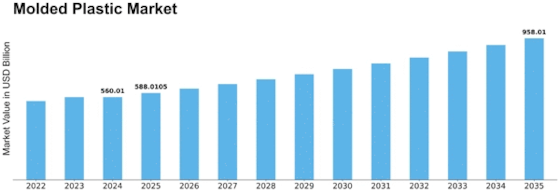

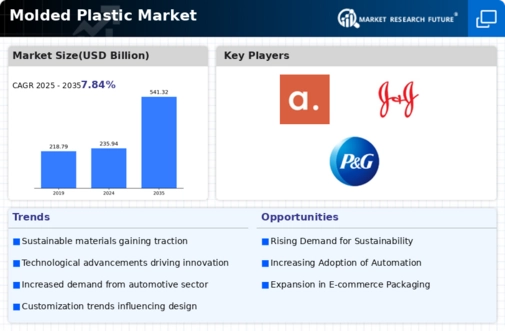

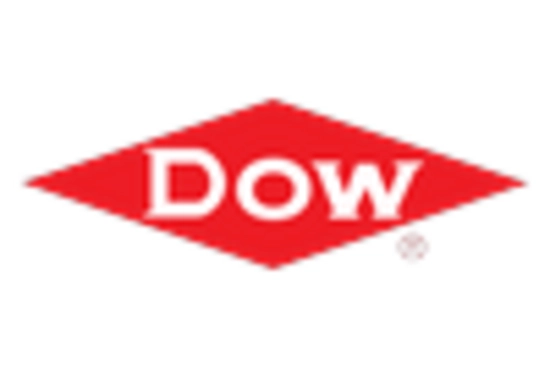
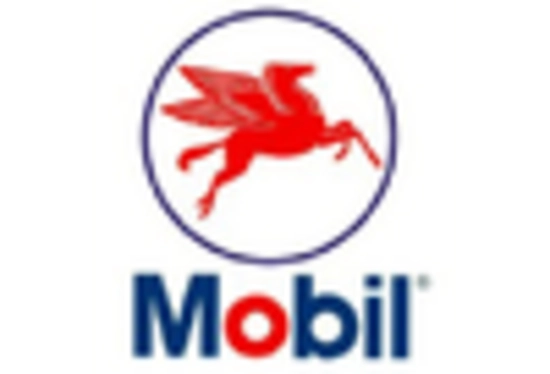
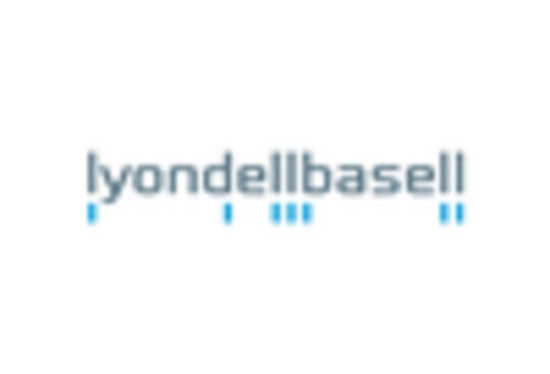
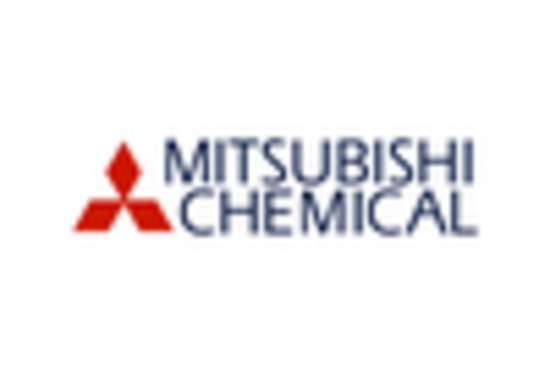


Leave a Comment